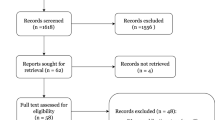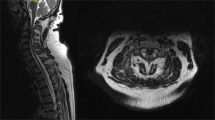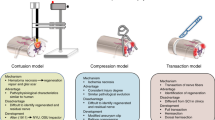Abstract
Spinal cord injury can be a life-altering trauma for patients and can be costly to patients and society alike. Generally recognized as biphasic, these injuries have both primary and secondary drivers. Although the primary insult is largely unavoidable, prevention of secondary injury mechanisms—and the resultant cascade—has been a target of substantial research. Continued spinal cord compression has been recognized as one of several deleterious secondary mechanisms, and decompressive and stabilization surgery has been routinely used for neuroprotection in this setting. Numerous biomechanical and animal studies have confirmed its potential utility. More recently, several high-quality randomized trials have concluded that early surgery for spinal cord injury improves rates of recovery when compared with delayed or nonoperative management. Herein, we argue that early surgery for spinal cord injury with continued cord compression offers significant benefit and should be undertaken when not contraindicated.
Similar content being viewed by others
Log in or create a free account to read this content
Gain free access to this article, as well as selected content from this journal and more on nature.com
or
References
Jazayeri SB, Beygi S, Shokraneh F, Hagen EM, Rahimi-Movaghar V. Incidence of traumatic spinal cord injury worldwide: a systematic review. Eur Spine J. 2015;24:905–18.
National Spinal Cord Injury Statistical Center. Facts and Figures at a Glance. Birmingham, Alabama: Univ. Alabama at Birmingham; 2015.
Tator CH, Fehlings MG. Review of the secondary injury theory of acute spinal cord trauma with emphasis on vascular mechanisms. J Neurosurg. 1991;75:15–26.
Anderson DK, Hall ED. Pathophysiology of spinal cord trauma. Ann Emerg Med. 1993;22:987–92.
Wagner FC Jr., Stewart WB. Effect of trauma dose on spinal cord edema. J Neurosurg. 1981;54:802–6.
Emery E, Aldana P, Bunge MB, Puckett W, Srinivasan A, Keane RW, et al. Apoptosis after traumatic human spinal cord injury. J Neurosurg. 1998;89:911–20.
Dolan EJ, Tator CH, Endrenyi L. The value of decompression for acute experimental spinal cord compression injury. J Neurosurg. 1980;53:749–55.
Delamarter RB, Sherman J, Carr JB. Pathophysiology of spinal cord injury. Recovery after immediate and delayed decompression. J Bone Jt Surg Am. 1995;77:1042–9.
Carlson GD, Minato Y, Okada A, Gorden CD, Warden KE, Barbeau JM, et al. Early time-dependent decompression for spinal cord injury: vascular mechanisms of recovery. J Neurotrauma. 1997;14:951–62.
Dimar JR II, Glassman SD, Raque GH, Zhang YP, Shields CB. The influence of spinal canal narrowing and timing of decompression on neurologic recovery after spinal cord contusion in a rat model. Spine. 1999;24:1623–33.
Guttmann L. Initial treatment of traumatic paraplegia and tetraplegia. Harris P, editor. Spinal Injuries Symposium. Edinburgh: Royal College of Surgeons, 1963;80–92.
Frankel HL, Hancock DO, Hyslop G, Melzak J, Michaelis LS, Ungar GH, et al. The value of postural reduction in the initial management of closed injuries of the spine with paraplegia and tetraplegia. I. Paraplegia. 1969;7:179–92.
Dall DM. Injuries of the cervical spine: II. Does anatomical reduction of the bony injuries improve the prognosis for spinal cord recovery? S Afr Med J. 1972;46:1083–90.
Harris P, Karmi MZ, McClemont E, Matlhoko D, Paul KS. The prognosis of patients sustaining severe cervical spine injury (C2-C7 inclusive). Paraplegia. 1980;18:324–30.
Duh MS, Shepard MJ, Wilberger JE, Bracken MB. The effectiveness of surgery on the treatment of acute spinal cord injury and its relation to pharmacological treatment. Neurosurgery. 1994;35:240–8. discussion248-249
Tator CH, Duncan EG, Edmonds VE, Lapczak LI, Andrews DF. Comparison of surgical and conservative management in 208 patients with acute spinal cord injury. Can J Neurol Sci. 1987;14:60–69.
Vaccaro AR, Daugherty RJ, Sheehan TP, Dante SJ, Cotler JM, Balderston RA, et al. Neurologic outcome of early versus late surgery for cervical spinal cord injury. Spine. 1997;22:2609–13.
Waters RL, Adkins RH, Yakura JS, Sie I. Effect of surgery on motor recovery following traumatic spinal cord injury. Spinal Cord. 1996;34:188–92.
Papadopoulos SM, Selden NR, Quint DJ, Patel N, Gillespie B, Grube S. Immediate spinal cord decompression for cervical spinal cord injury: feasibility and outcome. J Trauma. 2002;52:323–32.
La Rosa G, Conti A, Cardal S, Cacciola F, Tomasello F. Does early decompression improve neurological outcome of spinal cord injured patients? Appraisal of the literature using a meta-analytical approach. Spinal Cord. 2004;42:503–12.
Fehlings MG, Vaccaro A, Wilson JR, Singh A, W Cadotte D, Harrop JS, et al. Early versus delayed decompression for traumatic cervical spinal cord injury: results of the Surgical Timing in Acute Spinal Cord Injury Study (STASCIS). PLoS ONE. 2012;7:e32037.
Wilson JR, Singh A, Craven C, Verrier MC, Drew B, Ahn H, et al. Early versus late surgery for traumatic spinal cord injury: the results of a prospective Canadian cohort study. Spinal Cord. 2012;50:840–3.
Umerani MS, Abbas A, Sharif S. Clinical outcome in patients with early versus delayed decompression in cervical spine trauma. Asian Spine J. 2014;8:427–34.
Riew KD, Kang DG. Central cord syndrome: is operative treatment the standard of care? Spine J. 2015;15:443–5.
Brodell DW, Jain A, Elfar JC, Mesfin A. National trends in the management of central cord syndrome: an analysis of 16,134 patients. Spine J. 2015;15:435–42.
Author information
Authors and Affiliations
Corresponding author
Ethics declarations
Conflict of interest
:The authors declare that they have no conflict of interest.
Rights and permissions
About this article
Cite this article
Kaye, I.D., Vaccaro, A.R. The case for surgery of the injured spine in the management of traumatic cord injuries. Spinal Cord Ser Cases 4, 15 (2018). https://doi.org/10.1038/s41394-018-0043-1
Received:
Revised:
Accepted:
Published:
DOI: https://doi.org/10.1038/s41394-018-0043-1
This article is cited by
-
Multilevel critical stenosis with minimal functional deficits: a case of cervical spondylotic myelopathy
Spinal Cord Series and Cases (2018)
-
Awards and updates
Spinal Cord Series and Cases (2018)



